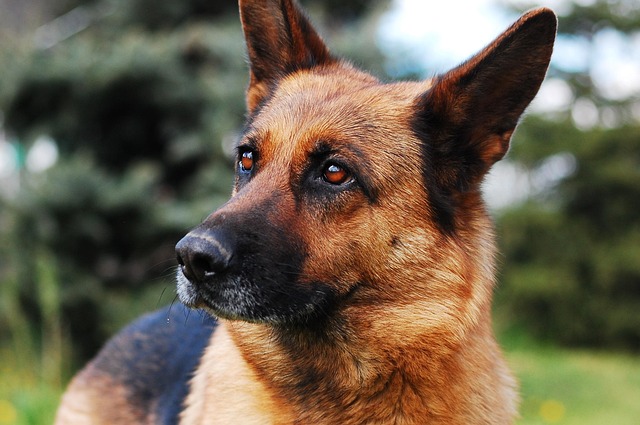
What is glaucoma in a dog?
You might notice your dog squinting more at mealtime or avoiding bright sunlight—these small changes could be early signs of a serious eye condition.
German Shepherd puppies are known for their boundless energy and that signature alertness, but there’s a health concern that lingers in the back of many owners’ minds. Hip dysplasia, a condition where the hip joint doesn’t form properly, isn’t just something that affects older dogs—puppies can show signs too, and this breed is particularly at risk. It’s not a certainty, of course, but understanding the early clues can make a world of difference for their long-term health.
Puppies as young as a few months old might start showing subtle signs. Maybe they hesitate to climb stairs, or you notice a slight limp after rough play in the yard. Some might struggle to get up from a lying position, or their hind legs might seem less coordinated during those zoomies they love so much. These aren’t just “growing pains”—they could be early indicators that the hip joints aren’t developing as they should. Genetics play a big role here; if a puppy’s parents had hip issues, the risk goes up. But environment matters too—things like rapid weight gain or too much high-impact exercise before their joints are fully formed can put extra strain on those developing hips.
 Visiting the vet regularly is key, even if your puppy seems fine. A vet can do a physical exam, checking for looseness in the hips or signs of discomfort. Sometimes they might recommend X-rays, though these are more common in older puppies since the joints are still forming in the early months. Early detection doesn’t always mean surgery or intense treatment right away; often, it’s about managing their activity, keeping their weight in a healthy range, and maybe starting joint supplements under veterinary guidance. These small steps can help slow the progression and keep your puppy comfortable as they grow.
Visiting the vet regularly is key, even if your puppy seems fine. A vet can do a physical exam, checking for looseness in the hips or signs of discomfort. Sometimes they might recommend X-rays, though these are more common in older puppies since the joints are still forming in the early months. Early detection doesn’t always mean surgery or intense treatment right away; often, it’s about managing their activity, keeping their weight in a healthy range, and maybe starting joint supplements under veterinary guidance. These small steps can help slow the progression and keep your puppy comfortable as they grow.
It’s also important to remember that responsible breeding makes a difference. Reputable breeders will screen their adult dogs for hip dysplasia and other genetic conditions, sharing those results with potential owners. Skipping that step to save money or get a puppy faster can lead to heartache down the line, not just for your pup but for your family too. Plus, in many places, ensuring your pet is healthy and well-cared for ties into local regulations—things like proper veterinary care and preventing unnecessary suffering are part of being a responsible pet owner, and they help keep our communities safe and compassionate.
As your puppy grows, watching their behavior is just as important as any vet visit. Do they seem to tire more easily on walks? Are they less interested in roughhousing with other dogs? These changes can be easy to brush off as “just getting older,” but in a breed prone to hip issues, they’re worth paying attention to. Adjusting their exercise routine—opting for shorter, more frequent walks instead of long hikes, or swapping intense play for gentle training sessions—can help protect their hips without taking away their joy.
Hip dysplasia in German Shepherd puppies isn’t a death sentence, and it doesn’t mean your puppy can’t live a happy, active life. With early awareness, proactive care, and guidance from your vet, you can help manage the condition and give them the best chance at a healthy future. It’s about balancing their natural energy with the care their bodies need, and staying informed so you can make the best choices for your furry friend.
At the end of the day, every puppy is different, but love and attention go a long way. Whether you’re bringing home a new German Shepherd puppy or already have one bouncing around your house, staying attuned to their needs—physical and emotional—will help you catch any issues early. Hip dysplasia might be a risk, but with the right care, your pup can grow into the loyal, loving companion you’ve been waiting for.

You might notice your dog squinting more at mealtime or avoiding bright sunlight—these small changes could be early signs of a serious eye condition.

Let’s set the scene: It’s a sweltering Phoenix afternoon—105°F outside—and you rushed your 2-year-old Lab mix, Cooper, on a quick walk to “get it over with.”

Let’s get real: You’re in your Miami apartment, watching your 3-year-old Corgi, Loki, struggle to climb the stairs to your second-floor unit.

Many dog owners brush off occasional scratching as just “dog behavior,” but persistent itching often signals something more—like a food allergy.

You might first notice your dog scratching more than usual—chewing at their paws until the fur looks thin, or rubbing their face against the couch nonstop.

Let’s be real: You’re standing in your Chicago apartment, watching your 3-year-old Beagle, Max, huff and puff just to climb onto the couch.